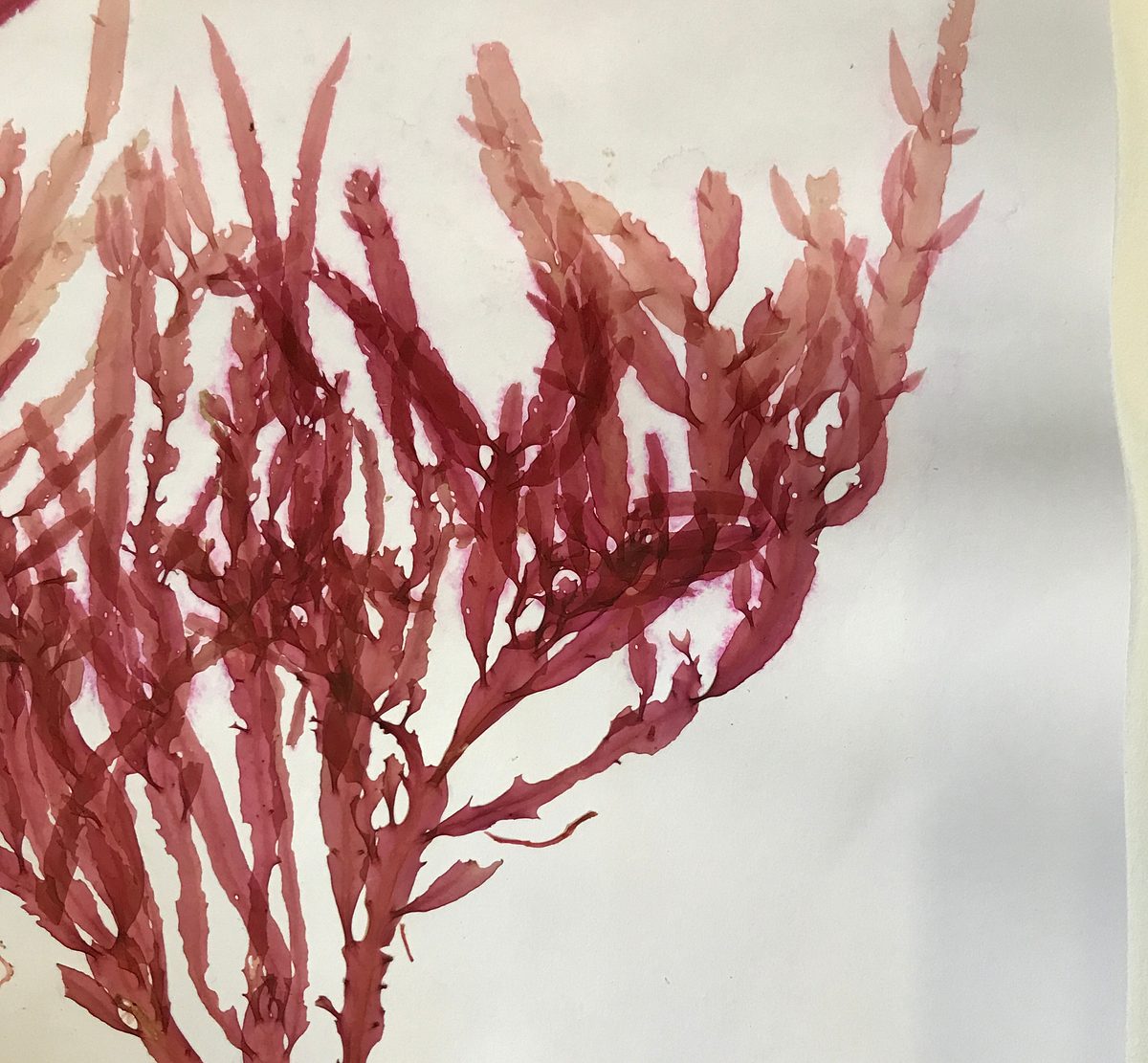


Dating back to 1802, our herbarium collections not only have scientific value but they are important historical records of the flora and their collectors. For example, among our collections are lichen specimens that were collected on expeditions to Antarctica 1929–1931 led by Douglas Mawson.
Around 85% of the collections are vascular plants, these are the plants we see most commonly, i.e. plants with flowers, and can be herbs, grasses, shrubs or trees and mainly living on the land. The remaining collections include algae, many from the Great Southern Reef that runs along the entire south coast of Australia, lichens and mosses.
We also have important collections of fungi, including some of which are poisonous and some that are edible – even the experts have difficulty telling them apart.

A very important part of the collection are the specimens that are the “Types” for species when they are described by taxonomists.
These Types are a formal part of how scientists give new species a name and ensure that each species is different and recognisable around the world.
Along with our older specimens, Types are vitally important and we protect them in special fire resistant cabinets in our vaults.
Over 800,000 vascular plant specimens are housed in the State Herbarium vaults.
Despite their prominence and richness in the natural and human environment, our knowledge of Australia's flowering plants is still incomplete. Much of the taxonomic research taking place in the State Herbarium, across Australia and around the world, is directed at these plants.
We provide information on vascular plants in a diversity of publications, including scientific papers, the Flora of South Australia, various lists and censuses of vascular plants, and handbooks to the naturalised flora, shrubs and trees, orchids, wattles, and grasses.
These attest to the contribution South Australian botanists and their Australian and international colleagues have made in improving the knowledge of South Australia's vascular plants.
Since the late 1800s the specimens assembled in the State Herbarium have formed a major foundation upon which this knowledge is based.
The State Herbarium also houses some of the state’s most important plant macrofossils, including type specimens of the South Australian Maslin Bay Eocene macroflora.
A public-access facility, the Eric Jackson Reference Herbarium, is available to those with at least some skills in plant identification to identify their own specimens themselves. It houses specimens of most South Australian vascular plants, a small library of books and a microscope. A series of pictorial fact sheets of marine algae is also available. Please contact the State Herbarium in advance to ensure you have the best use of the facility.
These less conspicuous plants are not often studied in detail by botanists but in South Australia we have a tradition of researching and writing about many of these groups. We hold very significant collections of these groups. Our handbooks on South Australian lichens, mosses, fungi and algae are based on these collections.
Southern Australian oceans are amongst the world's most biodiverse marine algal regions, particularly for red algae which flourish in deeper waters.
The State Herbarium's collections of green, red and brown algae are very extensive and includes the specimens used by Professor HBS Womersley in compiling the six volumes of the Marine Benthic Flora of Southern Australia.
The Bryophytes, comprising mosses, liverworts and hornworts, are distinct groups of non-vascular plants which are very ancient in their origins.
Some groups have complex and fascinating morphological adaptations to their environment, and some have even evolved a form of vascular system.
Research on mosses being undertaken at the State Herbarium is contributing towards the Flora of Australia project, especially in the families Pottiaceae and Bartramiaceae.
The State Herbarium houses a significant collection of worldwide bryophytes gathered by Emeritus Professor DG Catcheside of Flinders University.
Bryophytes (along with lichens) play an important role in arid ecosystems as components of the critical but fragile crusts that stabilise many arid soils.
The State Herbarium collection is particularly rich in arid soil crust species of bryophytes and lichens, notably a large collection from the research of Dr RW Rogers.
The fungi, with about 1.5 million species across many diverse subgroups, form the second-largest group of organisms in the world. Only insects are more numerous.
On a world scale, there are roughly 10 times as many fungi as there are vascular plants. They are also one of the least known major groups of biota, especially in Australia.
The State Herbarium houses an asset of national and global significance in its mycological (fungi) collection of around 25,000 specimens.
Most of the collection comprises the larger, non-pathogenic forms known as the macrofungi. The largest proportion is 16,000 specimens collected by Professor Sir JB Cleland (including about 400 type specimens).
In recent years intensive surveys of fungi throughout South Australia have contributed many new and valuable records to the State Herbarium collection, and added to the knowledge of the group. The State Herbarium's research on macro-fungi contributes to the national initiative Fungimap.
The State Herbarium holds a significant collection of lichens. This complex group of organisms is also known as the 'lichenised fungi', since each species is formed by a unique symbiosis (or collaboration) of a fungal and an algal species.
The alga of this association provides nutrients from photosynthesis, since fungi are not able to do so, whilst the fungus provides protection and other nutrients through decomposition.
The algal components are not unique and may even be capable of separate existence, hence each lichen species is defined by its fungal component.
The State Herbarium holds a significant collection of lichens collected during British and Australian Antarctic Expeditions of the early 20th century, mostly associated with Professor Sir Douglas Mawson.